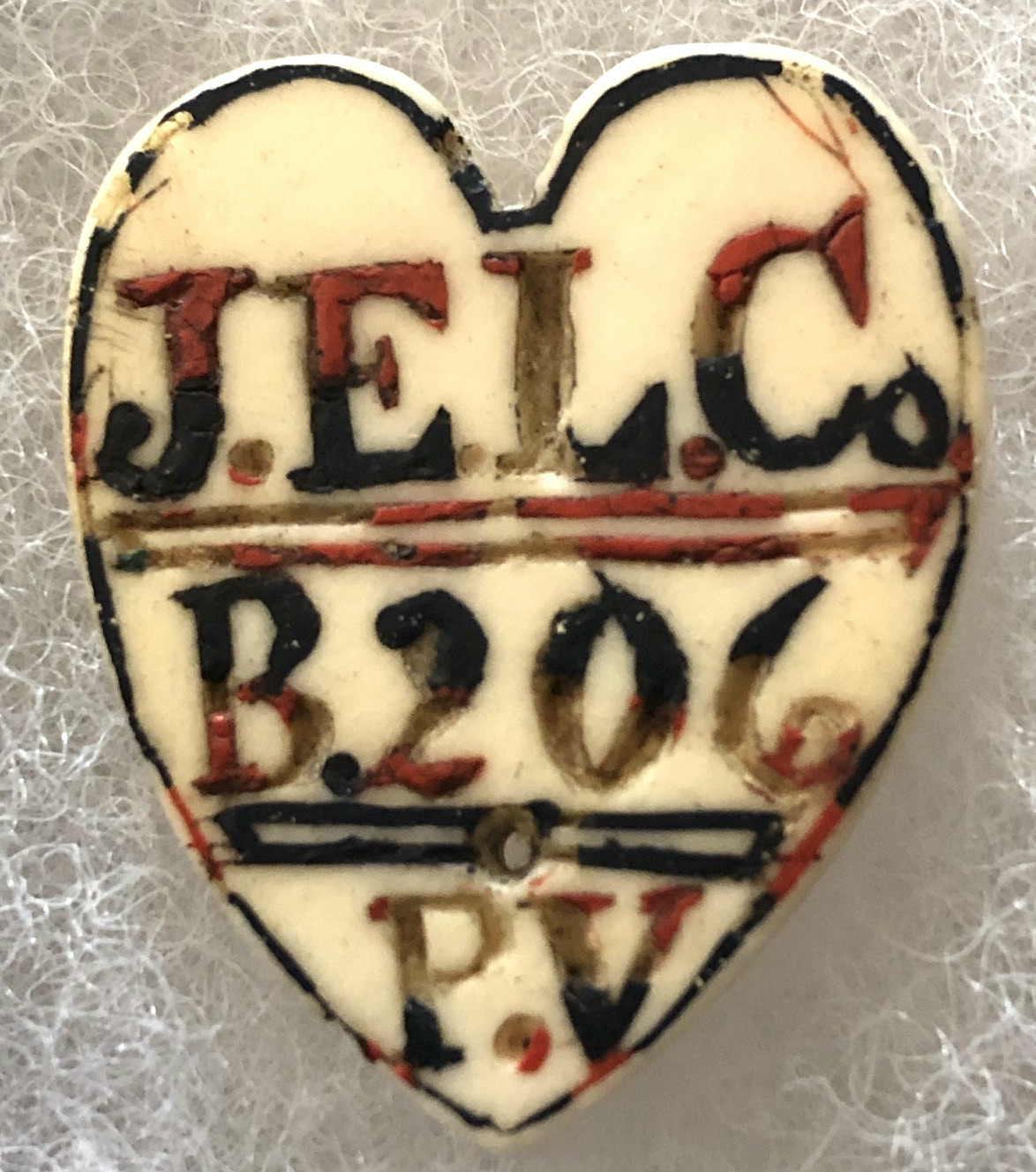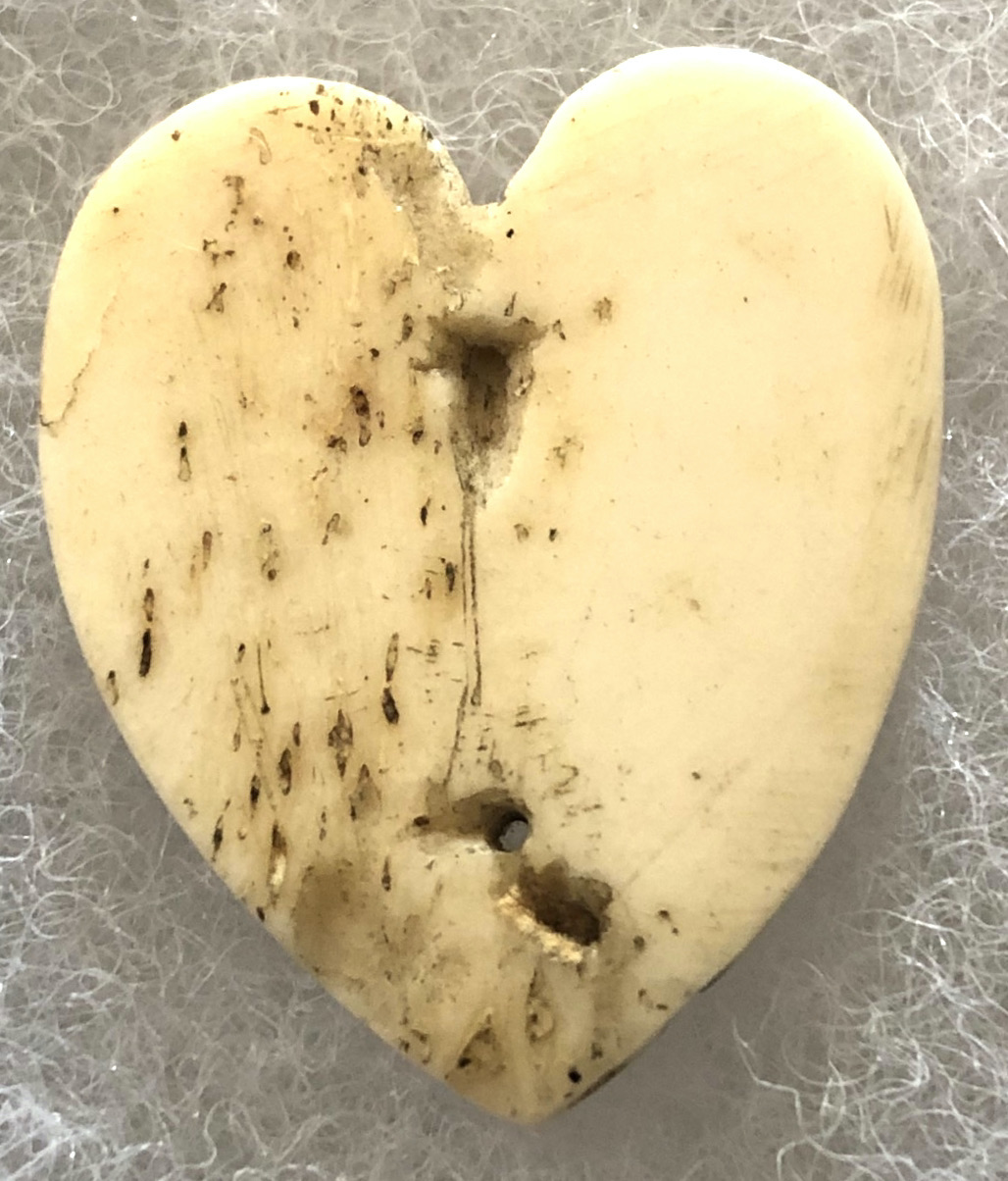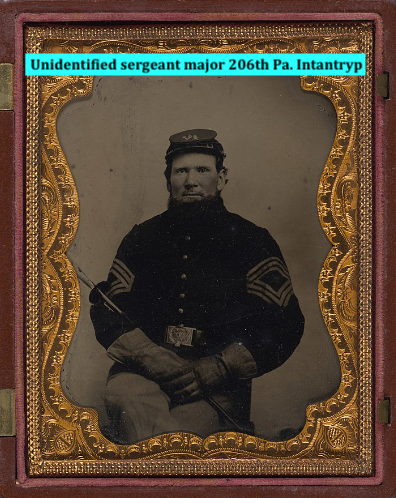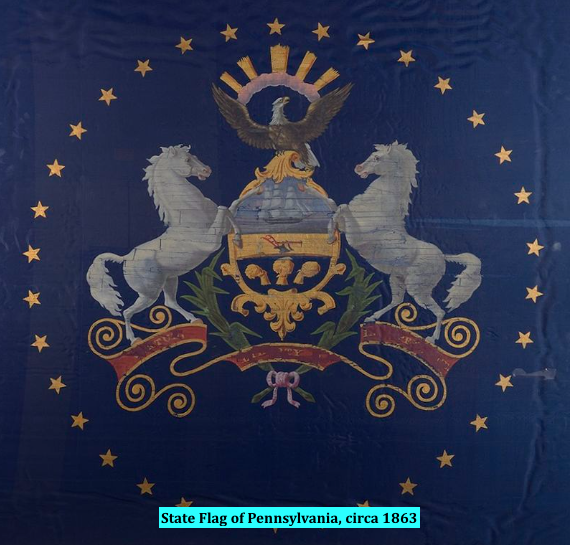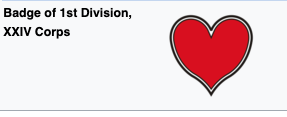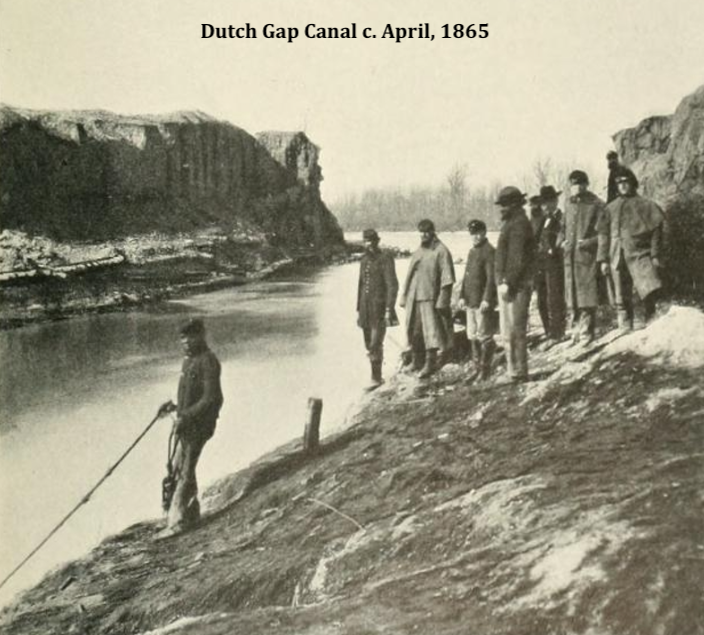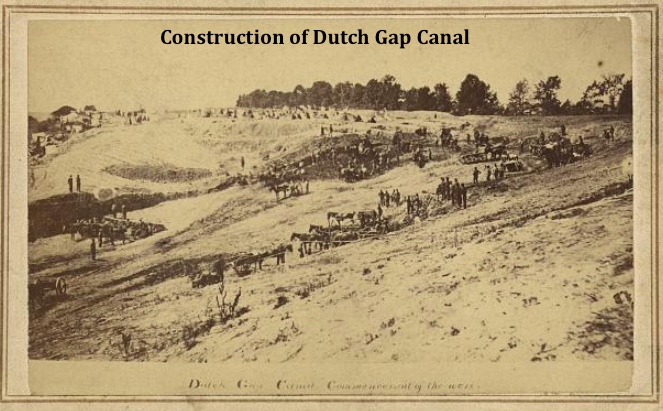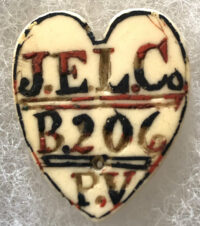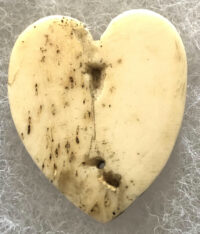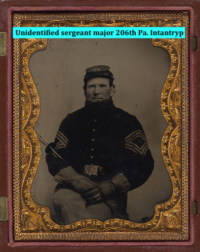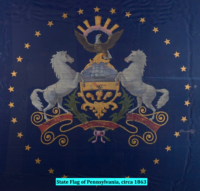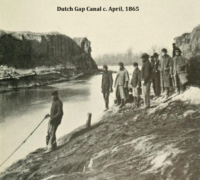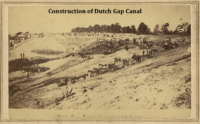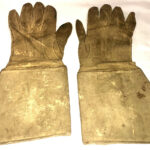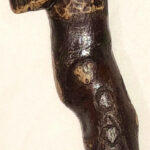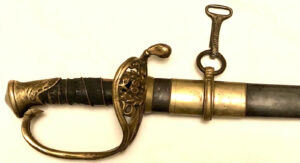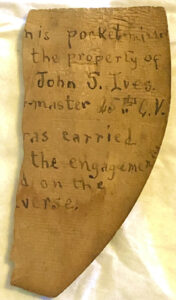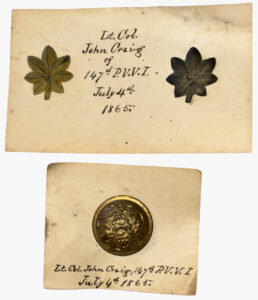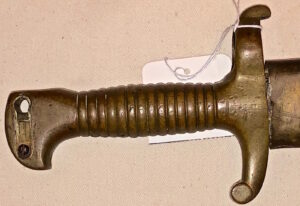Id’d Carved Bone 24th Corps Badge – Private James E. Lewis Co. B 206th Pa. Infantry
$650
Id’d Carved Bone 24th Corps Badge – Private James E. Lewis Co. B 206th Pa. Infantry – Carved bone, 24th Corps badge, with the following, inset, red and blue paraffin highlighted inscription:
“J.E.L. Co
206
P.V”
The soldier who carved this badge was James E. Lewis, Co. B, 206th Pa. Infantry. Lewis enlisted in August, 1864, as a private and served until the his regiment mustered out, in the end of June, 1865. From September until October, 1864, the 206th worked with the Engineer Corps, engaged in fatigue duty, at Dutch Gap, Va., while attached to the Provisional Brigade, Defenses of Bermuda Hundred, Army of the James. In October, 1864, the regiment would engage in duty in the trenches before Richmond, north of the James, while attached to 3rd Brigade, 1st Division, 10th Corps, Army of the James; in December, 1864, the 206th was transferred to 3rd Brigade, 1st Division, 24th Army Corps. When Richmond fell, the regiment would serve as one of the Federal units to take occupation of Richmond and perform provost duty, starting on April 3, 1865. This 24th Corps badge seemingly was carved by Private Lewis some time in December, 1864, when his regiment became attached to the 3rd Brigade, 1st Division of the 24th Corps.
The badge remains in excellent condition; the colors remain vivid, although there are some small areas of loss. On the back of the badge are two areas that are indicative of once having had a T-pin in place, apparently for a means of affixing the badge to the wearer’s hat or uniform. The badge measures as follows: 1” across; 1.25” in height.
James E. Lewis
| Residence was not listed;
Enlisted on 8/31/1864 as a Private. On 8/31/1864 he mustered into “B” Co. PA 206th Infantry He was Mustered Out on 6/26/1865 at Richmond, VA
|
206th PA Infantry
( 1-year )
| Organized: Camp Reynolds, Pittsburgh, PA on 9/8/64 Mustered Out: 6/26/65 at Richmond, VA Officers Killed or Mortally Wounded: 0 |
| From | To | Brigade | Division | Corps | Army | Comment |
| Nov ’64 | Dec ’64 | 3 | 1 | 10 | Army of the James | |
| Dec ’64 | Jun ’65 | 3 | 1 | 24 | Army of the James | Mustered Out |
The 206th Pennsylvania Infantry Regiment lost 1 enlisted man killed and 29 enlisted men to disease during the Civil War.
| 1864 | |
| September | Organized at Pittsburg under Colonel Hugh J. Brady, Lt. Colonel John T Fulton and Major Josiah B. Ferguson |
| September 9 | Left State for City Point, Va. |
| September – October | Duty with Engineer Corps engaged in fatigue duty at Dutch Gap, Va. attached to Provisional Brigade, Defenses of Bermuda Hundred, Army of the James |
| October 26 | Duty in trenches before Richmond north of the James attached to 3rd Brigade, 1st Division, 10th Corps, Army James |
| December | Attached to 3rd Brigade, 1st Division, 24th Army Corps |
| 1865 | |
| March 27 – April 22 | Temporarily attached to Devens’ 3rd Division |
| April 3 | Occupation of Richmond – provost duty. |
| May | At Lynchburg and Richmond |
| June 26 | Mustered out |
PENNSYLVANIA
TWO HUNDRED and SIXTH INFANTRY
(One Year)
|
Two Hundred and Sixth Infantry. – Col., Hugh J. Brady; Lieut.Col., John T. Fulton; Maj., Joseph B. Ferguson. The 206th, from the counties of Indiana, Westmoreland and Jefferson rendezvoused at Camp Reynolds, Pittsburg, and was mustered into the U. S. service from Aug. 26 to Sept. 9, 1864, for a term of one year. Most of the officers and men had previously served in other organizations. On Sept. 9 it left for Washington and while en route was directed to proceed to City Point, Va. Upon its arrival it was temporarily assigned to a provisional bri- gade in the army of the James and attached to the 18th corps on the Bermuda front. It was employed for 3 weeks in October in building a fort, a mile north of Dutch gap, which was named Fort Brady in honor of the efficient services rendered by the command. On Oct. 26, it reported to Gen. Terry, was assigned to the 3d brigade, 1st division, 10th corps, and went into winter quarters on the line north of Fort Harrison. On Dec. 3 the white infantry of the 10th and 18th corps was consolidated to form the 24th corps. When the general movement of the army commenced in March, 1865, the regiment was ordered to remain in camp, much to its distaste, the convalescents of the 1st divi- sion being ordered to report to Col. Brady. On April 22 it was assigned to provost duty in Richmond and also performed the same service a few weeks later at Lynchburg. It was mustered out on June 26 1865, the men being finally paid and discharged at Pittsburg on July 2. |
206th Pennsylvania Infantry Regiment
| 206th Pennsylvania Volunteer Infantry | |
| State Flag of Pennsylvania, circa 1863. | |
| Active | 8 September 1864–26 June 1865 |
| Country | United States of America |
| Allegiance | Union |
| Branch | Union Army |
| Role | Infantry |
| Engagements | American Civil War |
| Insignia | |
| Badge of 1st Division, XXIV Corps | |
The 206th Regiment Pennsylvania Volunteer Infantry was an infantry regiment of the Union Army in the American Civil War. Raised in the Pittsburgh area in August and September 1864, the regiment was sent to the Army of the James at Bermuda Hundred during the Siege of Petersburg. The regiment remained in camp during the Third Battle of Petersburg and instead marched into Richmond after its evacuation. After serving on provost duty in Virginia, it was mustered out in late June 1865.
History
An unidentified sergeant major of the regiment, possibly Hugh Brady
The 206th Pennsylvania was raised in the Pittsburgh area during August 1864 for a one-year term in response to President Abraham Lincoln‘s call for 500,000 men. It was organized under the command of Colonel Hugh J. Brady at Camp Reynolds near Pittsburgh on 8 September. All companies were recruited in Indiana County except for Company B in Jefferson and Companies E and K in Westmoreland; most of its officers and men were veterans, including Brady, who had previously served as Lieutenant Colonel of the 177th Pennsylvania Infantry, and a large number of 135th Pennsylvania Infantry veteran enlisted men. The 206th was ordered to Washington, D.C. on the day after its organization, but it was diverted at Baltimore to City Point, where it joined a provisional brigade in the XVIII Corps of the Army of the James. The regiment took positions on the Bermuda Hundred front, and on 4 October was placed on engineer duty. It crossed to the north bank of the James on that day and worked to construct a fort one mile north of Dutch Gap[1] under Confederate fire, losing one man killed and several wounded. The regiment was commended by army commander Benjamin Butler for its skill and the fort was named Fort Brady in recognition.[2][3]
The 206th was transferred to the X Corps on 26 October and joined the 3rd Brigade of its 1st Division, along with the 11th Maine, 24th Massachusetts, 10th Connecticut, and 100th New York.[4] Shortly afterwards, it went into winter quarters north of Fort Harrison, and continued training while on normal camp duties for the next several months. The regiment became part of the 1st Division of XXIV Corps on 3 December when X Corps was split. On 27 March, when the Army of the James began its movement to attack positions for the Petersburg breakthrough, the 206th was detached from the brigade and attached to the 3rd Division, remaining in camp on provost duty in spite of protests from the regiment. Brady was ordered to organize the convalescents of the 1st Division in preparation for movement. After the breakthrough, the 206th was among the first units to march into Richmond unopposed on 3 April,[1] to discover that the Confederate forces had evacuated.[2][3] Between 29 March and 9 April, the regiment suffered casualties of seven wounded and one officer and one man captured or missing, for a total of nine.[5]
The regiment was subordinated to the Military Governor of Richmond for provost duty in the city on 22 April. It briefly returned to the 1st Brigade a month later; Brady took command of the latter as the senior officer. The regiment was detached for provost duty in Lynchburg, where it arrived on 30 May,[6] for two weeks, then returned to the brigade at Richmond. The 206th was mustered out of Federal service on 26 June; its men returned to Pittsburgh and disbanded on 21 July.[2] During its service, the regiment suffered a total of thirty deaths: one enlisted man killed and twenty-nine died of disease.[1]
